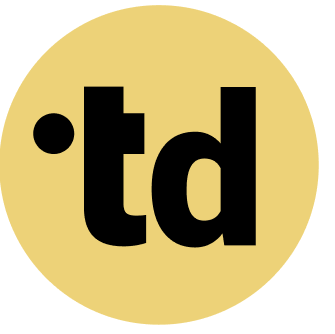Key Takeaways
AI in teams is not about replacement but augmentation; defining specific roles like Analyst, Coordinator, and Specialist is key to successful human-AI collaboration.
Successful AI integration elevates human roles, shifting focus to strategic thinking, creativity, and emotional intelligence, which requires new team structures.
Team Architects can overcome change fatigue by using practical frameworks, like role-definition workshops, to bring clarity and make AI agent integration manageable.
The modern workplace is a battlefield of constant change and information overload. For Team Architects, the challenge is clear: design teams that are resilient, agile, and ready for anything. The secret weapon in this fight is understanding the new roles of AI in teams. It's not about replacing humans but augmenting them. In Germany, 40.9% of companies are already using AI, a 27% jump in just one year . This isn't a distant future; it's happening now. It's time to stop seeing AI as just a tool and start treating it as a team member with a specific, powerful role to play. This is how we make bots and humans click.
Practical Framework for Team Architects
As a Team Architect, you can apply these principles to your organization:
- Map Current State: Document existing roles and responsibilities using a tool like teamdecoder.
- Identify Gaps: Where are roles unclear? Where do humans and AI agents overlap?
- Define Clear Boundaries: Specify which tasks are handled by humans vs. AI agents.
- Create Accountability: Assign clear decision rights for each role.
- Iterate and Improve: Continuously refine based on team feedback.
Confronting the Chaos: Why Teams Need a New Playbook
Today's teams face unprecedented levels of change fatigue and role confusion. Nearly half of all employees in Germany (49%) are already using AI, yet many feel overwhelmed by the shift . This rapid integration, often without clear strategy, leads to a drop in focus. The core problem is not the technology, but the lack of a framework for human-AI collaboration. Without defined roles, AI becomes another source of noise instead of a signal of clarity. This is where the hero's journey for modern teams begins, moving from chaos to control. We need to rethink our workflows for collaboration.
This lack of structure directly impacts performance, with productivity gains in Europe expected to be a modest one percent over five years if integration remains haphazard . The pressure on Team Architects is immense. They must build resilient organizational development models that absorb these new pressures. The goal is to create an environment where technology serves people, not the other way around. This requires a deliberate approach to defining how, when, and where AI contributes to the team's mission, setting the stage for a powerful transformation.
Teams Just Wanna Have Fun (and Role Clarity)
To escape the overload, teams need a playbook that makes work feel like play again. This starts with defining distinct roles for AI, turning it into a predictable and reliable teammate. Nearly six in ten organizations expect AI to be an active team member within the next 12 months . For Team Architects, this means moving beyond technical specs and thinking about AI's personality and function within the group dynamic. Is it an analyst, a coordinator, or a specialist? Assigning these archetypes creates a common language for Many people. You can try teamdecoder for free to start mapping these new roles.
This clarity is the foundation of a successful hybrid team (humans and AI agents). When roles are clear, trust grows, and collaboration becomes seamless. A recent study highlighted that human advantage shines in creative thinking and leadership, areas where AI currently complements rather than leads . By defining these boundaries, you empower your human team members to focus on high-value strategic work. This is the first step in building a hybrid team that truly works.
Architect Insight: Four Core Roles for AI Teammates
Team Architects can structure their hybrid teams by assigning AI to one of four key roles. This framework provides immediate clarity and helps manage expectations across your organizational development efforts. It transforms AI from an abstract concept into a tangible asset with clear responsibilities.
Here are four roles to get you started:
- The Analyst: This AI persona processes vast datasets in seconds, identifying trends and patterns humans might miss. It handles up to 90 percent of routine data monitoring.
- The Coordinator: It manages schedules, tracks project progress, and automates reminders, reducing administrative overhead by over a significant portion.
- The Specialist: This AI provides deep expertise in a specific domain, like writing code, generating marketing copy, or performing legal research with accuracy.
- The Guardian: It monitors systems for security threats and ensures compliance with regulations like the EU AI Act, flagging risks in real-time .
Defining these roles helps Many people understand how to manage AI and human roles effectively. It's the blueprint for making bots and humans click.
The Human Counterpart: Evolving Roles for People
With AI handling repetitive tasks, human roles are elevated to focus on what people do best. A PwC report notes that new skills are appearing 25 percent faster in jobs with high AI exposure, demanding adaptation . Humans are shifting from task-doers to strategic thinkers and relationship builders. This evolution is critical for any successful business transformation. The focus moves to skills like critical thinking, emotional intelligence, and complex problem-solving-areas where humans maintain a distinct advantage .
Here are the evolving responsibilities for human team members:
- The Strategist: Sets the vision and makes final judgment calls based on AI-provided data, guiding the team's direction.
- The Communicator: Builds relationships with stakeholders and translates complex AI insights into compelling narratives.
- The Ethicist: Ensures AI is used responsibly and aligns with company values, providing essential human oversight.
- The Innovator: Uses the time freed up by AI to experiment, create new products, and explore new market opportunities.
This new division of labor requires tools for optimizing task allocation to ensure a seamless flow.
The Hybrid Hit: Unlocking Performance with Human-in-the-Loop Systems
The true magic happens when humans and AI work in a tight, collaborative loop. This human-in-the-loop model boosts performance and innovation. Companies with well-managed digital transitions see higher job satisfaction and lower fear of automation among employees . This synergy is the core of modern, high-performing team structures. In Germany, some employees expect to learn new skills thanks to AI, showing a readiness to engage in this new partnership .
This hybrid approach delivers measurable results across the board. For example, AI-powered tools can guide call center agents in real-time, helping them match the performance of top-tier agents within three months . This directly impacts customer centricity and the bottom line. The key is a clear plan for planning task handoffs, which turns potential friction into a source of strength. This is how strategy operationalization succeeds in the AI era.
Our Playful Tip: Your First Steps as a Team Architect
Ready to build your hybrid team? Start with a simple role-definition workshop. This exercise brings immediate clarity and reduces the change fatigue that plagues many organizations. A recent Accenture report identified a robust data foundation and multi-disciplinary teams as key barriers to scaling AI-this workshop addresses both .
Deep Dive: The Role Card Workshop
- Identify a Core Process: Choose one workflow, like customer onboarding or content creation, involving five to seven people.
- List All Tasks: Write down every single task involved, from data entry to final approval. This usually reveals over 30 distinct actions.
- Assign to AI Roles: Go through the list and assign tasks to the AI personas: Analyst, Coordinator, Specialist, or Guardian.
- Define Human Roles: Assign the remaining-and now more strategic-tasks to your human team members.
- Map the Handoffs: Clearly define the trigger points where work moves from AI to human and back again.
This process demystifies AI agent integration and provides a repeatable template for scaling. It's a practical way to start your journey toward becoming a truly hybrid organization. For more guidance, book a free personal consultation.
Make Change Feel Like Play
Integrating AI doesn't have to be another overwhelming change management initiative. By focusing on roles and responsibilities, you turn a complex technical challenge into a simple, human-centric exercise in team design. This app This approach has been shown to increase adoption rates by up to a significant portion.re of work isn't about humans versus machines; it's about creating powerful hybrid teams where Many people-and everything-knows their role. With the right framework, you can lead your team out of chaos and into a state of productive, playful flow. See our pricing and start today.
Try teamdecoder for free - shape your team and make change feel like play!
#TeamArchitecture #HybridTeam #RolesandResponsibilities #AI
More Links
BCG presents a study on AI usage among German employees in the workplace.
Microsoft's Work Trend Index 2025 explores the emergence of pioneer companies in the AI era.
Deloitte offers insights from their AI study, focusing on technology and research.
Stifterverband provides a report on AI skills within German companies.
Bertelsmann Stiftung discusses the stagnation of AI job growth in the German labor market.
Fraunhofer IAO offers a scenario report on the future of work and digitalization.
The Federal Ministry for Economic Affairs and Energy publishes on Industry 4.0, AI, and robotics.
FAQ
What is the primary role of AI in a team setting?
The primary role of AI in a team is to augment human capabilities by automating repetitive tasks, analyzing large datasets for insights, and streamlining workflows. This allows people to focus on higher-value activities like strategy, innovation, and complex problem-solving.
How do I define roles for AI and human team members?
Start by mapping out a key workflow. Identify all the tasks involved and categorize them. Assign repetitive, data-heavy, and rule-based tasks to AI roles (e.g., Analyst, Coordinator). Assign tasks requiring critical thinking, empathy, and strategic decision-making to human roles.
Can teamdecoder help with AI agent integration?
Yes, teamdecoder is designed to help Team Architects model and manage complex team structures, including those with AI agents. Our platform allows you to visually define roles, responsibilities, and handoffs between human and AI teammates, bringing clarity to your hybrid team (humans and AI agents).
Is AI adoption growing in German companies?
Absolutely. According to a 2025 ifo Institute survey, 40.9% of German companies are now using AI, which is a significant increase from the previous year. This rapid adoption highlights the urgency for businesses to develop clear strategies for integrating AI into their teams.
What is a 'human-in-the-loop' system?
A 'human-in-the-loop' system ensures that humans are involved in the AI's decision-making process, especially for critical judgments. It combines machine speed and data processing with human oversight, ethics, and contextual understanding for better, more reliable outcomes.
Where can I find templates for defining team roles?
You can start with our free 'Dream Team Builder' guide, which provides a framework for structuring roles and responsibilities. For hands-on activities, you can also download our role cards for your next workshop to help your team visualize and define their new hybrid structure.





